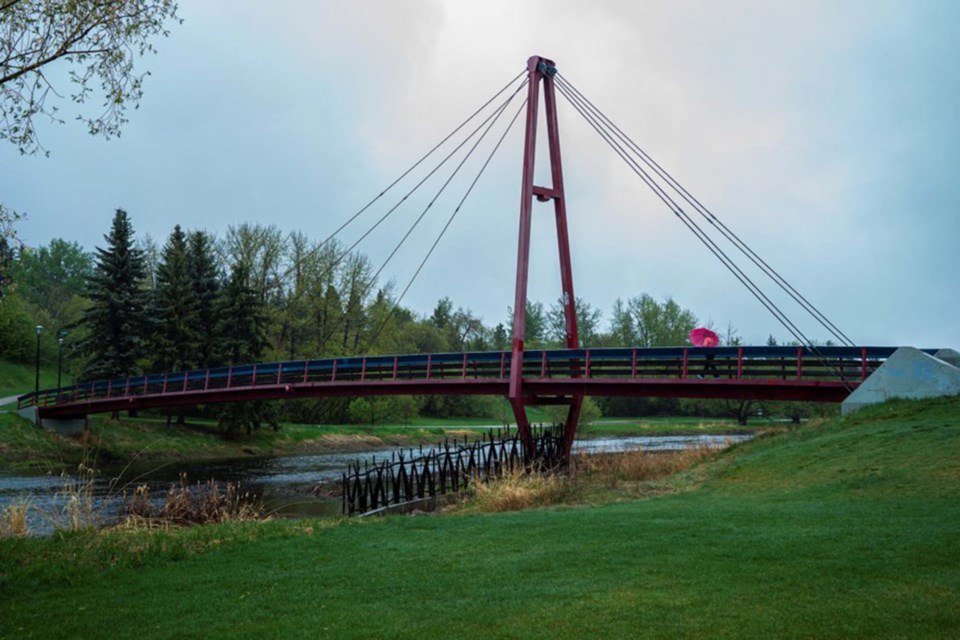St. Albert city council has set its sights on goals such as downtown vibrancy and economic prosperity, and the city has now released a road map in aims of achieving them.
Key activities on the list include completing the servicing design for Lakeview Business District and developing a long-term debt strategy.
Bill Fletcher, the city’s chief administrative officer, presented St. Albert’s 2022-25 corporate business plan to city council during their Aug. 29 meeting. The corporate business plan outlines how council’s strategic plan — which council released in June — will be realized.
Council’s six strategic plan priorities include economic prosperity, downtown vibrancy, supporting community well-being, adapting to a changing natural environment, and financial sustainability.
“The plan assists with balancing the maintenance of our high standards expected for delivery of programs and services with the realities of our financial and resource situation,” Fletcher told council.
Additional items on the plan include developing the West Area Structure Plan (ASP) and more specific neighbourhood plans, which will outline the land use of lands west of Ray Gibbon Drive, including the Badger Lands and Lakeview Business District.
The city also plans to conduct a review of the Arden Theatre operating model following the suggestion from the 2021 Ernst & Young operational and fiscal review to explore alternate models for running the theatre.
For the downtown vibrancy priority, examples of initiatives include an update and prioritization of the Downtown Area Redevelopment Plan (DARP), and completion of the detailed design for Millennium Park.
Fletcher noted some of the initiatives within the plan are “still subject to budget approval” as council has not yet funded them.
“They will factor into our ongoing priority-based budgeting work in the coming weeks,” Fletcher said.
Additional planning work
Mayor Cathy Heron asked during the council meeting why the plan only includes the servicing design for Lakeview, instead of a jump start on the servicing.
“There’s a desire from this council to not just design it but do it,” Heron said.
Fletcher said once the city establishes the servicing design, they will have a better idea of the cost and scope of the options they will provide to council to complete the servicing.
Heron also noted the plan includes a feasibility study to look into building or establishing youth transitional housing.
“What’s involved with that feasibility study?” Heron asked. “The report [from] the mayor’s task force on homelessness [which operated from 2018-2020] was very clear that this is the one and only recommendation.”
In an email, city spokesperson Cory Sinclair said the feasibility study will provide more detailed information on the development of a youth transitional home (including considering the cost effectiveness of building or buying housing, and considering opportunities for partnerships to take on capital and operating costs).
One of the other initiatives outlined in the business plan — to enhance housing options in the city — includes plans to conduct a housing needs assessment.
“Honestly, we know there’s a need,” Heron said during the council meeting. “I don’t know if spending a bunch of money on a needs assessment is the right choice.”
Fletcher acknowledged the city knows there’s a need for multiple types of housing “at multiple levels of occupancy and affordability.”
“What we don’t know is what are the optimum needs for St. Albert,” Fletcher said.
The housing needs assessment will come forward for council approval in the future, Heron said, where it can be discussed further.
Changing natural environment
Council’s strategic priority to adapt to a changing natural environment includes initiatives such as creating a climate adaptation plan to look into risks related to adverse weather events.
Also included is the development of a green environment strategy, which will set goals and targets for “key environmental opportunities and risks facing the city and the community.”
Heron said at a recent Edmonton Metropolitan Region Board (EMRB) meeting Leduc and Edmonton had shared news of their greenhouse-gas reduction plans.
“I’m just throwing it on the floor as something we might want to look at,” Heron said.
Fletcher said there is an upcoming regional chief administrative officer meeting where he will look into the matter further.
Meghan Myers, the city’s environment manager, told The Gazette in May the city is in the process of updating its greenhouse-gas emission targets. Sinclair said in an email this will be covered in the resilient infrastructure long-range plan.
The city’s corporate business plan is typically released in the spring, following council’s strategic planning. This year, council’s strategic planning was delayed due to COVID-19.
“It seems a little late in our term to get this done,” Heron said of the corporate business plan, but noted the plan will carry over into the future council’s term, so they can “get their feet under them” before their own plan is developed.
The plan will be reviewed annually, and the city will provide quarterly updates outlining any progress on each initiative.




